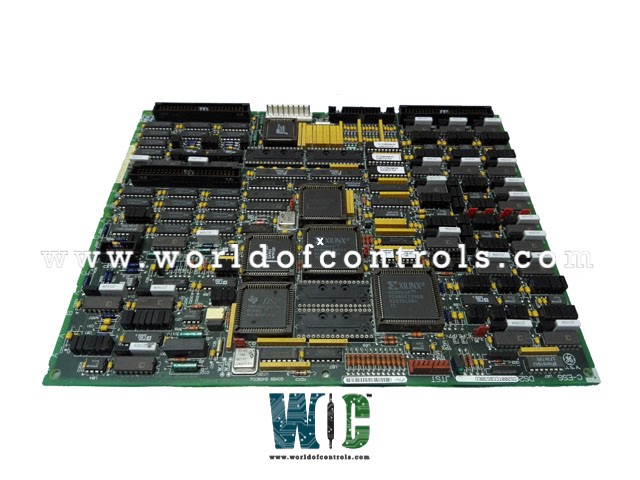
World Of Controls understands the criticality of your requirement and works towards reducing the lead time as much as possible.
DS200TCCBG3BCC - Common Extended Analog I/O Board is available in stock which ships the same day.
DS200TCCBG3BCC - Common Extended Analog I/O Board comes in UNUSED as well as REBUILT condition.
To avail our best deals for DS200TCCBG3BCC - Common Extended Analog I/O Board, contact us and we will get back to you within 24 hours.
Part No.: DS200TCCBG3BCC
Manufacturer: General Electric
Country of Manufacture: United States of America (USA)
Size: 33.0 cm high x 17.8 cm , wide
Technology: Surface mount
Temperature: -30 to 65oC
Product Type: Common Extended Analog I/O Board
Availability: In Stock
Series: Mark V
DS200TCCBG3BCC is a Common Extended Analog I/O Board developed by GE. It is a part of the Mark V control system. The Common Extended Analog I/O Board (TCCB) scales and conditions a variety of analog input signals sourced from the TBCB terminal Board located on the R5 core and the TCEB board in the P1 core. Once scaled and conditioned, these analog signals are transmitted to the STCA board via the 3PL connector. The STCA board serves as a central receiver for these signals, where they are further utilized for operational control, monitoring, and data logging purposes. This integration ensures that the system can effectively manage and respond to real-time operational conditions based on accurate and reliable analog measurements.
The TCCB board hosts the circuitry responsible for providing excitation to the RTDs, which are connected via the TBCB terminal board. RTDs operate by varying their resistance with changes in temperature. A constant current is applied through the RTD from the TBCB terminal board. As the temperature changes, the resistance of the RTD adjusts accordingly, causing a corresponding change in voltage across the RTD.
The WOC team can always help you with your Mark V requirements. For more information, please contact WOC.
What is DS200TCCBG3BCC?
It is a Common Extended Analog I/O Board developed by GE under the Mark V series.
How does the board measure and scale RTD signals?
The board measures the voltage across the RTD, which changes with temperature-induced variations in resistance. It scales these voltage signals according to predefined parameters to accurately reflect temperature changes. This scaling ensures that the temperature readings provided are reliable and aligned with system requirements.
What connectors are used for signal transmission to the board?
RTD signals are transmitted to the board from the TBCB terminal board via the JCC and JDD connectors. These connectors facilitate the transfer of analog signals, ensuring that temperature data is effectively received and processed by the TCCB board.
How does the board integrate with the I/O?
Once processed and conditioned, signals are sent from the board to the I/O Engine via the 3PL connector. The I/O Engine serves as a central hub for receiving, managing, and utilizing analog inputs across the system. This integration supports real-time monitoring of temperature variations, crucial for maintaining operational parameters within specified limits.